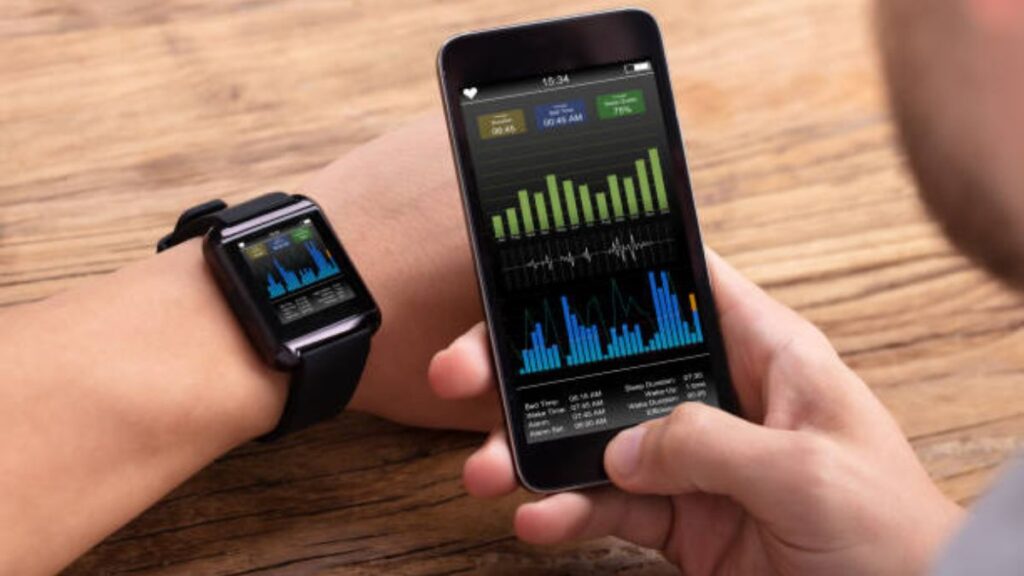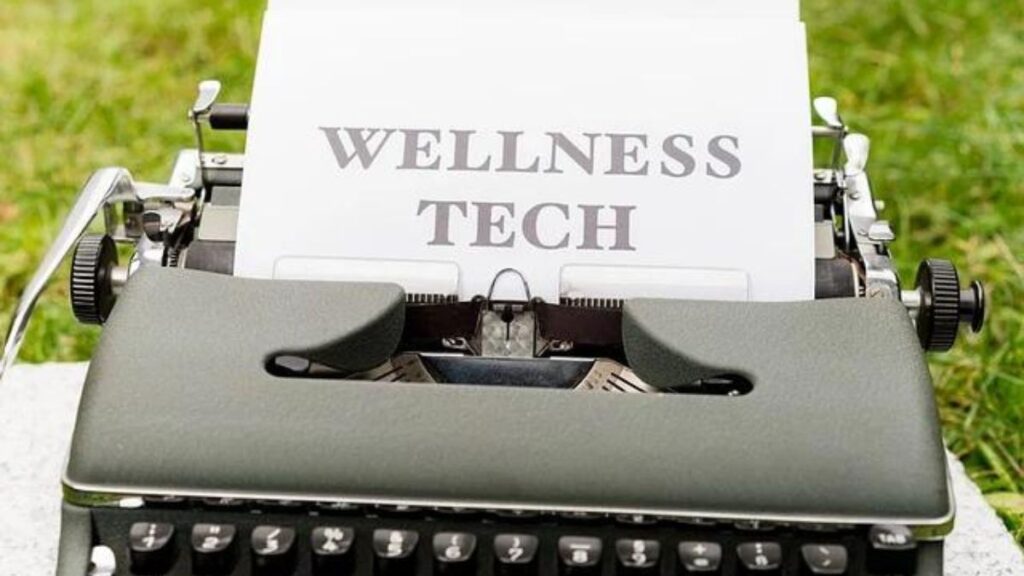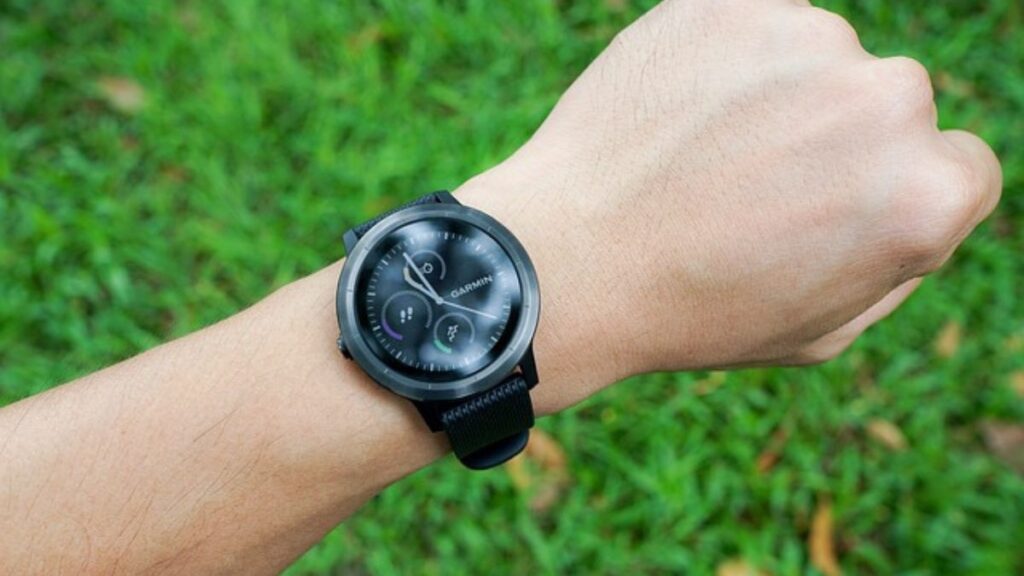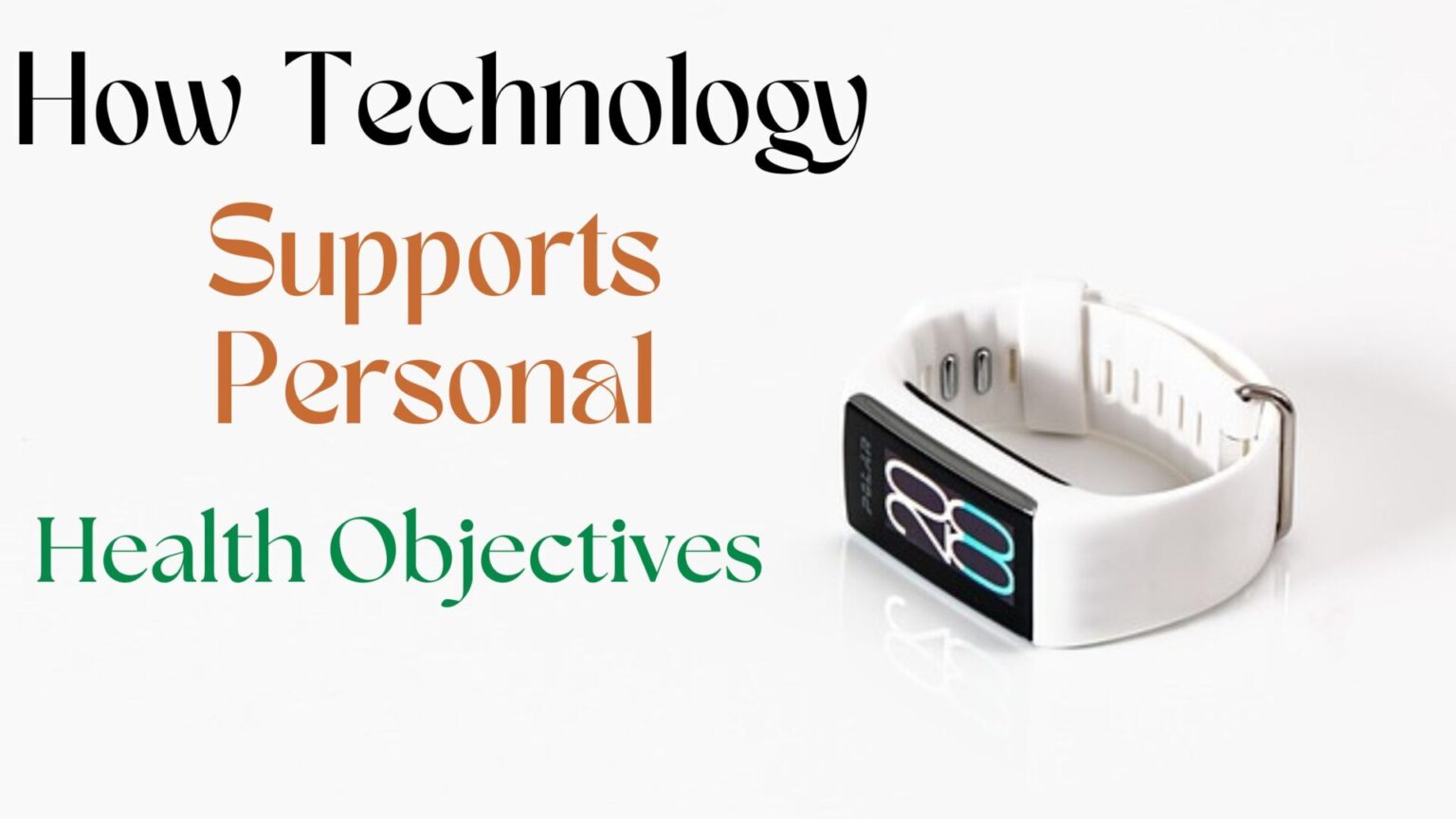Introduction: –
How Technology Supports Personal Health Objectives

In the digital age, technology plays an increasingly vital role in helping individuals pursue and achieve their personal health objectives. From managing chronic conditions to promoting overall wellness, technological innovations have revolutionized the way we approach health and fitness. Let’s explore how technology supports these objectives and empowers individuals to lead healthier lives.
How does technology supports personal health objectives and empower individuals to lead healthier lives?
- Data-driven Insights: Technology enables individuals to collect and analyze data related to their health and fitness. Wearable devices like smartwatches and fitness trackers monitor vital signs, physical activity, and sleep patterns, providing valuable insights into overall health. By tracking trends and patterns over time, users can identify areas for improvement and make informed decisions to optimize their well-being.
- Personalized Guidance: Many health and fitness apps leverage artificial intelligence and machine learning algorithms to deliver personalized recommendations and guidance. Whether it’s creating customized workout plans, suggesting nutritious recipes, or offering meditation sessions tailored to individual preferences, technology adapts to users’ needs, preferences, and goals, enhancing the effectiveness of their health journey.
- Remote Monitoring and Telehealth: Telehealth platforms and remote monitoring devices enable individuals to access healthcare services and support from anywhere, at any time. Patients can consult with healthcare providers virtually, receive real-time feedback on their progress, and manage chronic conditions more effectively. This remote access to healthcare promotes convenience, improves access to specialized care, and reduces the need for in-person appointments, particularly in remote or underserved areas.
- Health Tracking and Accountability: Mobile apps and digital platforms allow users to track various aspects of their health, including diet, exercise, medication adherence, and mental well-being. These tools not only help individuals set specific health goals but also provide accountability and motivation to stay on track. Social features, such as sharing achievements and progress with friends or participating in challenges, further enhance motivation and engagement.
- Access to Health Education and Resources: Technology provides access to a wealth of health-related information, educational resources, and support networks. Through online articles, videos, podcasts, and forums, individuals can learn about preventive care, disease management, and healthy lifestyle practices. Additionally, digital health platforms connect users with peer support groups, online communities, and expert advice, fostering a sense of belonging and empowerment.
- Innovative Treatment Solutions: Advances in medical technology, such as wearable medical devices, remote monitoring systems, and telemedicine platforms, offer innovative solutions for managing chronic conditions and improving treatment outcomes. From continuous glucose monitors for diabetes management to virtual physical therapy sessions for rehabilitation, technology enables individuals to access specialized care and personalized treatment plans, leading to better health outcomes and quality of life.
How is technology used to improve the health of people?
Technology is used in various ways to improve the health of people across the globe. Here are some key areas where technology plays a significant role:

- Telemedicine and Telehealth: Telemedicine allows patients to consult with healthcare providers remotely, using telecommunications technology such as video conferencing and mobile apps. This enables individuals to access medical care from the comfort of their homes, particularly beneficial for those in remote areas or with limited mobility. Telehealth also includes services like remote monitoring of vital signs, virtual mental health counseling, and online prescription services, improving access to healthcare and reducing barriers to timely treatment.
- Health Monitoring Wearables: Wearable devices, such as smartwatches, fitness trackers, and medical-grade wearables, monitor various health metrics in real-time. These devices track parameters like heart rate, activity levels, sleep patterns, and even blood glucose levels. By providing continuous monitoring and data collection, wearables empower individuals to take proactive steps towards improving their health, managing chronic conditions, and making informed lifestyle choices.
- Health Apps and Software: Mobile applications and software platforms offer a wide range of health-related services, including fitness tracking, nutrition management, medication reminders, symptom tracking, and mental wellness support. These apps provide personalized guidance, educational resources, and tools for setting and tracking health goals. Additionally, they facilitate communication between patients and healthcare providers, enabling secure messaging, appointment scheduling, and access to medical records.
- Remote Patient Monitoring: Remote patient monitoring (RPM) involves the use of connected devices to track patients’ health status outside of traditional healthcare settings. RPM devices collect and transmit data to healthcare providers, allowing for early detection of changes in health status and timely intervention. This is particularly valuable for individuals with chronic conditions such as diabetes, hypertension, and heart disease, as it enables proactive management and reduces the need for frequent hospital visits.
- Digital Health Records: Electronic health records (EHRs) and electronic medical records (EMRs) digitize patients’ health information, making it easily accessible to healthcare providers across different settings. Digital health records improve communication and coordination of care between healthcare professionals, reduce medical errors, and streamline administrative tasks. Patients also benefit from better continuity of care, as their health history and treatment information are readily available to all authorized providers.
- Artificial Intelligence and Machine Learning: AI and machine learning algorithms analyze vast amounts of health data to identify patterns, predict outcomes, and personalize treatment plans. These technologies are used in various healthcare applications, including disease diagnosis, medical imaging interpretation, drug discovery, and genetic analysis. By harnessing the power of AI, healthcare providers can deliver more accurate diagnoses, tailor interventions to individual needs, and improve clinical decision-making.
What are some examples of modern technological products designed to promote and maintain human health?
There are numerous modern technological products designed to promote and maintain human health. Here are some examples:

- Fitness Trackers: Devices like Fitbit, Garmin, and Apple Watch track physical activity, monitor heart rate, and provide insights into sleep patterns, encouraging users to stay active and maintain healthy habits.
- Smart Scales: These scales measure not only weight but also metrics like body fat percentage, muscle mass, and BMI (Body Mass Index), offering a comprehensive view of one’s health and fitness progress.
- Health Monitoring Wearables: Wearable devices such as continuous glucose monitors for diabetics, ECG (electrocardiogram) monitors, and pulse oximeters help individuals monitor specific health metrics in real-time, enabling proactive management of chronic conditions and early detection of health issues.
- Telehealth Platforms: Telemedicine platforms and mobile health apps facilitate remote consultations with healthcare professionals, allowing individuals to access medical advice, prescriptions, and monitoring from the comfort of their homes.
- Nutrition Apps: Apps like MyFitnessPal and Lose It! help users track their food intake, count calories, and make healthier dietary choices by providing nutritional information, meal planning assistance, and recipe suggestions.
- Meditation and Mental Health Apps: Apps like Headspace, Calm, and Insight Timer offer guided meditation sessions, stress-relief techniques, and mindfulness exercises to support mental well-being and promote relaxation.
- Smart Pill Dispensers: These devices help individuals manage their medication schedules by dispensing pills at the right times and sending reminders to take medication, reducing the risk of missed doses and medication errors.
- Posture Correctors: Wearable devices and smart garments designed to improve posture provide real-time feedback and reminders to maintain proper posture, reducing the risk of musculoskeletal issues and enhancing overall well-being.
- Air Purifiers and Water Filtration Systems: Technological advancements in air and water purification systems help remove pollutants, allergens, and contaminants, creating healthier indoor environments and reducing the risk of respiratory problems and waterborne diseases.
- Virtual Reality (VR) Fitness: VR fitness games and experiences offer immersive workouts and interactive training sessions, making exercise more engaging and enjoyable while improving cardiovascular health and physical fitness.
These are just a few examples of the many technological products available today that contribute to promoting and maintaining human health across various aspects of wellness.
In conclusion,
Embracing a tech approach to personal fitness and nutrition opens up a world of possibilities for achieving your health goals. With smart solutions like fitness apps, wearables, and online resources, you have the tools and support you need to make meaningful progress towards a healthier, happier lifestyle. So why wait? Harness the power of technology today and take control of your wellness journey like never before.
Here are some frequently asked questions (FAQs) regarding how technology supports personal health objectives, along with references:
FAQs:
- How does technology help in monitoring personal health?
- Technology offers wearable devices like fitness trackers and smartwatches that monitor various health metrics such as heart rate, steps taken, sleep quality, and more. These devices provide real-time feedback, allowing individuals to track their progress towards health goals.
- Can technology assist in managing nutrition and diet?
- Yes, numerous apps and websites provide features for tracking food intake, calorie counting, meal planning, and even personalized recipe suggestions based on dietary preferences and health goals. Some examples include MyFitnessPal, Lose It!, and Fooducate.
- What role does technology play in promoting physical activity?
- Technology encourages physical activity through fitness apps, gamification of exercise routines, virtual workout classes, and online communities that provide support and motivation. Moreover, GPS-enabled apps can track outdoor activities like running and cycling, offering route suggestions and performance analysis.
- How does technology facilitate mental health and mindfulness practices?
- There are numerous mental health apps that offer meditation guides, stress-relief exercises, mood tracking, and therapy sessions with licensed professionals through text or video calls. Examples include Headspace, Calm, and Talkspace.
- What are some examples of telemedicine and virtual healthcare services?
- Telemedicine platforms enable individuals to consult healthcare professionals remotely for non-emergency medical issues through video calls, chats, or phone calls. Some services offer prescription refills, specialist consultations, and remote monitoring of chronic conditions. Examples include Teladoc, Amwell, and Doctor on Demand.
References:
- Patel, M. S., Asch, D. A., & Volpp, K. G. (2015). Wearable devices as facilitators, not drivers, of health behavior change. Jama, 313(5), 459-460.
- Schoeppe, S., Alley, S., Van Lippevelde, W., Bray, N. A., Williams, S. L., Duncan, M. J., & Vandelanotte, C. (2016). Efficacy of interventions that use apps to improve diet, physical activity and sedentary behaviour: a systematic review. International Journal of Behavioral Nutrition and Physical Activity, 13(1), 127.
- Firth, J., Torous, J., Nicholas, J., Carney, R., Pratap, A., Rosenbaum, S., … & Sarris, J. (2017). The efficacy of smartphone-based mental health interventions for depressive symptoms: a meta-analysis of randomized controlled trials. World Psychiatry, 16(3), 287-298.
- Hollander, J. E. & Carr, B. G. (2020). Virtually Perfect? Telemedicine for Covid-19. New England Journal of Medicine, 382(18), 1679-1681.
These resources should provide comprehensive insights into the ways technology supports personal health objectives. If you need more specific information or have further questions, feel free to ask!






